Picked as the symbol of the student-led mobilization against the cross-strait trade service pact, the sunflower is also becoming an emblem around which the nation’s artistic and cultural communities can rally to support the protest movement.
Rex How (郝明義), a former national policy adviser to President Ma Ying-jeou (馬英九), has initiated an online campaign called “100 Sunflower Artworks” asking artists to post sunflower-themed pieces on the Web site www.savetaiwan.net.
“Every one of us can contribute something to save Taiwan,” How said.
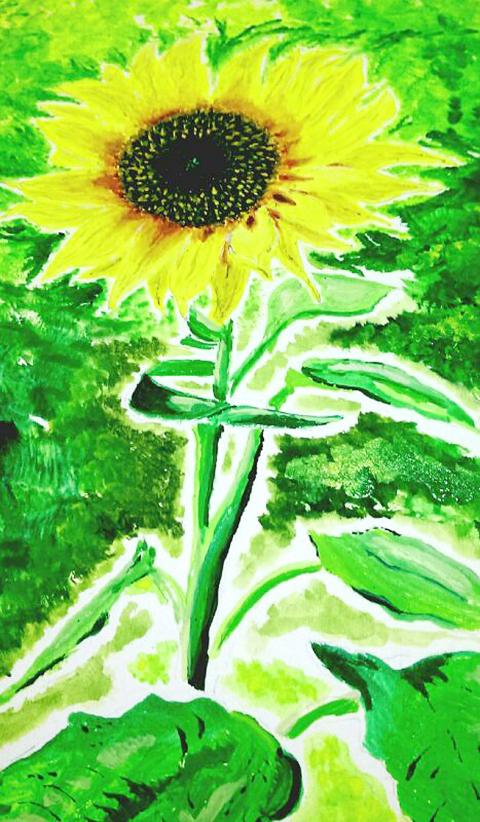
Photo: www.savetaiwan.net.
How and some of his friends have invited 100 people from the local artistic and cultural communities to be the first contributors to the Internet campaign.
Their idea is for these 100 individuals to submit their artwork showcasing the protest movement’s symbol in any artistic medium, from painting, photography, and graphic design, to sculpture, poetry, or literature, such as poems or essays.
The former Ma adviser said that with the help of his friends and other supporters of the movement, the 100 Sunflower Artworks initiative was successfully launched last night.
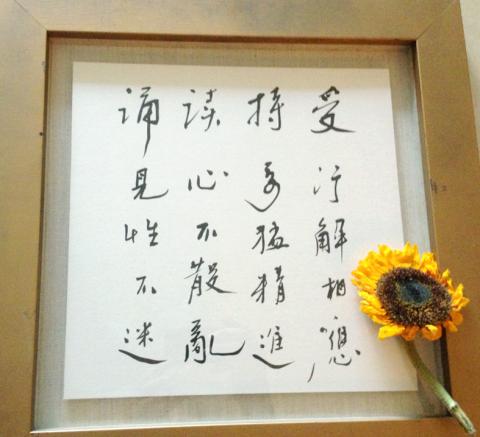
Photo: www.savetaiwan.net.
The first person to submit a piece to the Web site was Nieh Yung-chen (聶永真), the graphic designer responsible for creating the student movement’s “Democracy at 4am” advertisement that ran in the New York Times.
The ad features a rendering of a sunflower in black felt-tip pen that Nieh drew on the back of his hand.
Nieh was followed by theater director Ko I-chen (柯一正), who submitted a photograph of himself displaying a sunflower drawn on his left palm toward the camera, while clenching his right back into a fist in a defiant stance.
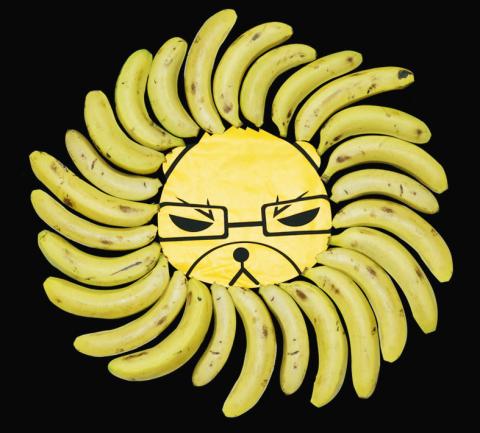
Photo: www.savetaiwan.net
“The image means that I have the iron will and determination to defend democracy,” Ko said.
Xue Xue Institute founder Lilin Hsu (徐莉玲) contributed a photograph of a wooden deer carving partially concealed by a sunflower.
Author and social commentator Lucifer Chu (朱學恒) submitted an image of angry-looking bear’s face ringed by bananas to form the shape of a sunflower, in mockery of former Chinese Nationalist Party (KMT) legislator Chiu Yi (邱毅).
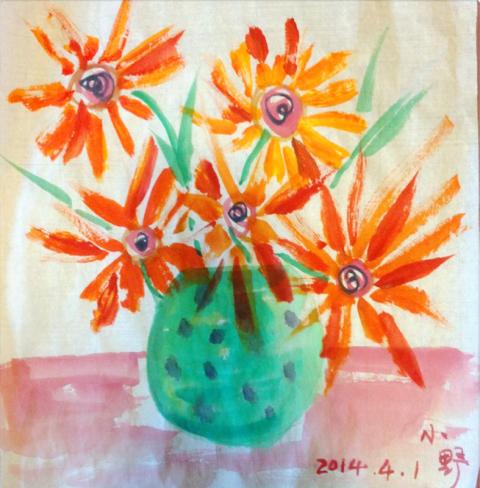
Photo: www.savetaiwan.net.
Chiu made himself a target for netizens’ derision when, while speaking on a China CCTV program, he pointed to a photograph of the student occupation of the Legislative Yuan in Taipei and said that the sunflowers were actually bananas.
Other personalities who have signed up to produce artwork for the campaign include: award-winning photographer Chang Chao-tang (張照堂), movie director Wang Hsiao-ti (王小棣), art critic Hu Yung-fen (胡永芬), graphic designer Akibo Lee (李明道), avant-garde artist Tsui Kuang-Yu (崔廣宇), former director of the Kaohsiung Museum of Fine Arts Lee Jiun-shyan (李俊賢) and author Hsiao Yeh (小野).
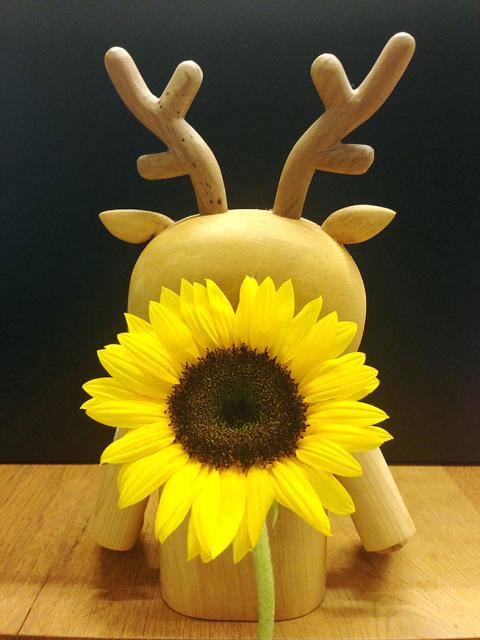
Photo: www.savetaiwan.net.
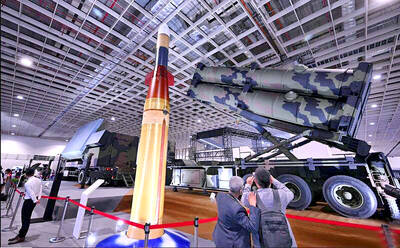
Taiwan is to commence mass production of the Tien Kung (天弓, “Sky Bow”) III, IV and V missiles by the second quarter of this year if the legislature approves the government’s NT$1.25 trillion (US$39.78 billion) special defense budget, an official said yesterday. Commenting on condition of anonymity, a defense official with knowledge of the matter said that the advanced systems are expected to provide crucial capabilities against ballistic and cruise missiles for the proposed “T-Dome,” an advanced, multi-layered air defense network. The Tien Kung III is an air defense missile with a maximum interception altitude of 35km. The Tien Kung IV and V
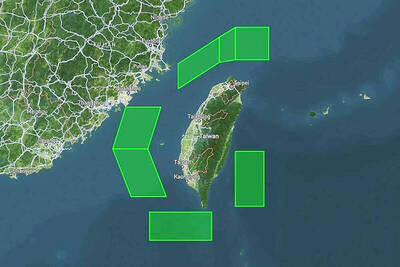
The disruption of 941 flights in and out of Taiwan due to China’s large-scale military exercises was no accident, but rather the result of a “quasi-blockade” used to simulate creating the air and sea routes needed for an amphibious landing, a military expert said. The disruptions occurred on Tuesday and lasted about 10 hours as China conducted live-fire drills in the Taiwan Strait. The Civil Aviation Administration (CAA) said the exercises affected 857 international flights and 84 domestic flights, affecting more than 100,000 travelers. Su Tzu-yun (蘇紫雲), a research fellow at the government-sponsored Institute for National Defense and Security Research, said the air
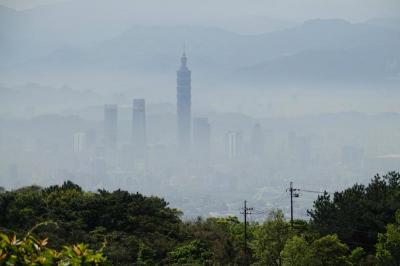
A strong continental cold air mass is to bring pollutants to Taiwan from tomorrow, the Ministry of Environment said today, as it issued an “orange” air quality alert for most of the country. All of Taiwan except for Hualien and Taitung counties is to be under an “orange” air quality alert tomorrow, indicating air quality that is unhealthy for sensitive groups. In China, areas from Shandong to Shanghai have been enveloped in haze since Saturday, the ministry said in a news release. Yesterday, hourly concentrations of PM2.5 in these areas ranged from 65 to 160 micrograms per cubic meter (mg/m³), and pollutants were

Taiwan’s armed forces have established response protocols for a wide range of sudden contingencies, including the “Wan Chun Plan” to protect the head of state, the Ministry of Defense (MND) said today. After US President Donald Trump on Saturday launched a series of airstrikes in Venezuela and kidnapped Venezuelan President Nicolas Maduro, concerns have been raised as to whether China would launch a similar “decapitation strike” on Taiwan. The armed forces regularly coordinate with relevant agencies and practice drills to ensure preparedness for a wide range of scenarios, Vice Minister of National Defense Hsu Szu-chien (徐斯儉) told reporters before a